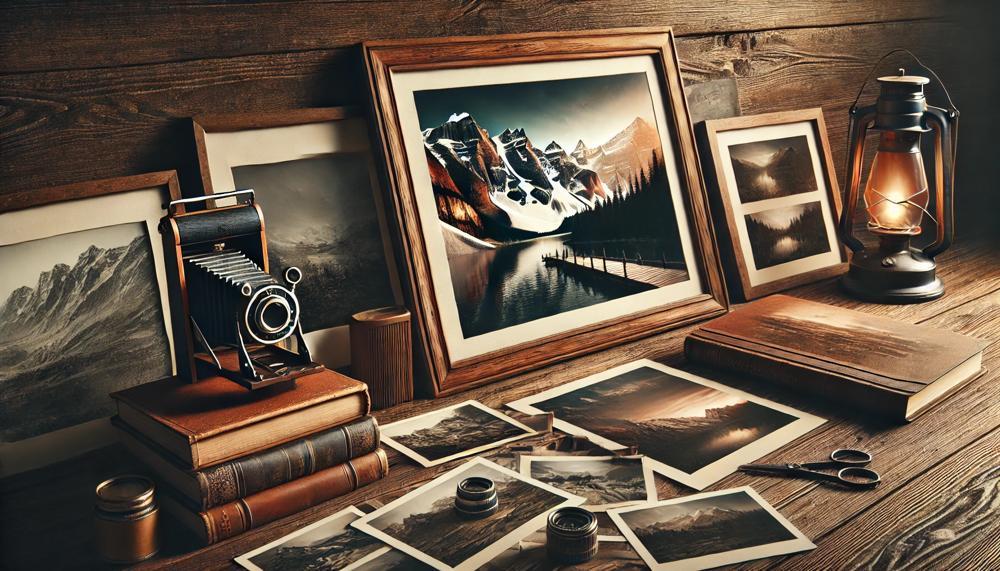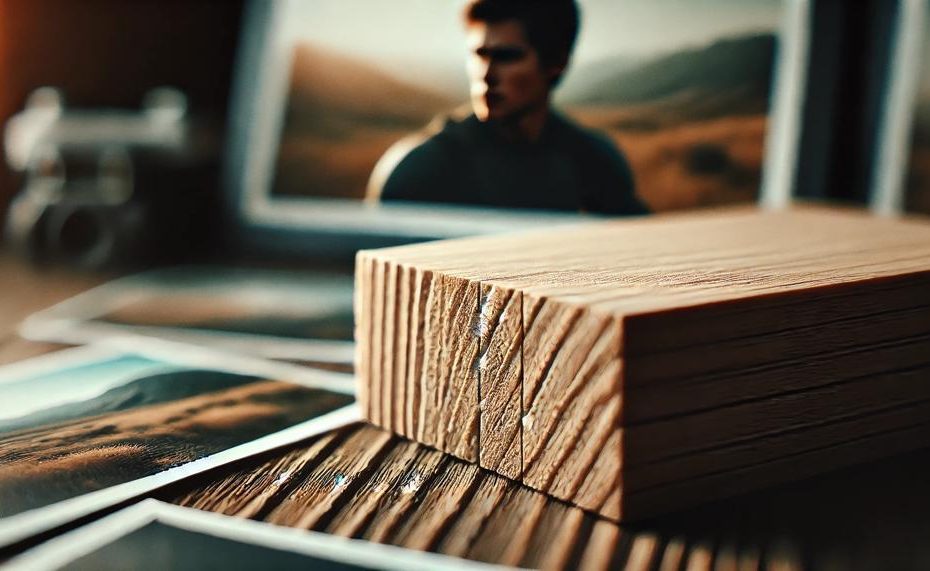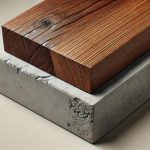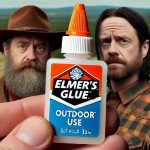Yes, you can glue pictures on wood, and it’s a fantastic way to create rustic, timeless keepsakes. This guide will walk you through the process with key tips and tricks to ensure your project is successful.
Key Takeaways:
- Choose the Right Adhesive: Opt for PVA glue or Mod Podge, which are both compatible with paper and wood and dry clear.
- Apply Evenly: Spread a uniform layer of adhesive on the wood to prevent peeling edges or air pockets.
- Position Carefully: Place the photo on the wood and press down gently but firmly to ensure it adheres properly without shifting.
- Consider Alternatives: Besides wood, other surfaces like glass, paper, or canvas each require specific techniques for effective adhesion.
Transforming your photos into wooden art pieces not only adds a rustic charm but also turns them into unique, personal decor items. Let’s dive into the steps to make sure your photos stick perfectly and last long on wood.

Table of Contents
Choosing the Right Glue
Choosing the right glue for adhering pictures to wood requires attention to several key factors to ensure a secure and long-lasting bond.
- Bond Strength: The adhesive must create a robust bond that can withstand the test of time. For instance, PVA glue and epoxy glue are known for their strong adhesive properties, making them suitable for securing pictures to wood.
- Drying Time: Depending on the complexity of your project and your working speed, you might opt for a glue with a slower drying time to allow for adjustments. Super glue dries quickly and forms a strong bond almost immediately, but it can be less forgiving if repositioning is needed.
- Clarity Upon Drying: To maintain the visual integrity of your project, use a glue that dries clear. Products like Mod Podge and clear-drying PVA glue ensure that no unsightly glue marks detract from the beauty of your photo and wood combination.
- Compatibility: The glue must work well with both materials without causing damage. Mod Podge and PVA glue are excellent choices as they are specifically designed to work with various surfaces, including wood and paper, without causing wrinkles or warping.
- Ease of Use: For projects requiring precision, glues that are easy to control and apply are beneficial. Spray adhesives and PVA glues are generally user-friendly and allow for even application, minimizing the risk of air bubbles and uneven bonding.
By considering these factors, you can choose the ideal glue that not only ensures a strong bond but also preserves the aesthetic quality of your photo-to-wood project.
Preparing the Wood and Picture
To ensure a flawless bond when gluing pictures to wood, follow these essential steps:
Gather Necessary Supplies
You will need:
- Wood: Choose the type and size that suits your project.
- Pictures: Print or select the images you want to use.
- Suitable Glue: Mod Podge, PVA, or epoxy glue works well.
Prepare the Wood Surface
- Sanding: Smooth the wood surface with sandpaper to remove any rough spots or splinters.
- Cleaning: Wipe away dust and debris using a damp cloth or a tack cloth to ensure a clean surface.
Select the Right Glue
Choose glue based on the wood type and environment:
- Mod Podge: Ideal for decoupage and provides a clear finish.
- PVA Glue: Great for general use and easy to handle.
- Epoxy Glue: Offers a strong bond, suitable for heavier wood types.
Apply Glue Evenly
- Thin Layer: Apply a thin, even layer of glue on the wood surface using a brush or sponge applicator. This prevents excess glue from seeping out.
- Coverage: Ensure full coverage without overloading the surface.
Align and Press Pictures
- Positioning: Carefully place the picture on the glued surface. Align it properly to avoid misplacement.
- Pressing: Firmly press down the picture, starting from the center and moving outwards to eliminate air bubbles and ensure proper adhesion.
Smooth Out Imperfections
- Wrinkles and Bubbles: Use a squeegee or a credit card wrapped in cloth to smooth out any wrinkles or bubbles. This step is crucial for a professional finish.
Allow Sufficient Drying Time
- Drying Period: Let the glued picture dry for at least 24 hours to ensure a secure bond.
- Environment: Place the project in a dust-free, ventilated area to avoid contamination during the drying process.
Applying the Glue
When applying glue to attach pictures to wood surfaces effectively, follow these key steps for a perfect finish:
Gather Tools and Materials
Ensure you have all necessary items: wood, pictures, suitable glue (Mod Podge or PVA), sandpaper, a clean cloth, a roller or brush, and a sealant.
Prepare the Wood Surface
Clean the wood thoroughly to remove any dust and debris. Sand the surface to make it smooth, ensuring the glue adheres well.
| Step | Action | Details |
| 1 | Clean the Wood | Remove dust and debris with a cloth. |
| 2 | Sand the Surface | Use fine-grit sandpaper for a smooth finish. |
Choose and Prepare the Photo
Select a high-resolution photo for clarity. Trim the edges to fit the wood piece perfectly.
Apply the Glue
Evenly spread glue on the back of the photo. Use a brush or roller for uniform application. Apply a thin layer to avoid excess glue seeping out.
| Step | Action | Details |
| 3 | Spread Glue on Photo | Use a brush or roller for an even coat. |
| 4 | Apply Thin Layer | Avoid excess to prevent mess. |
Attach the Photo to the Wood
Carefully place the photo onto the wood surface. Use a roller to smooth out any air bubbles or wrinkles.
Seal the Photo
Once the glue dries, apply a sealant to protect the photo and enhance durability. Polyurethane or acrylic sealants work well.
| Step | Action | Details |
| 5 | Place Photo on Wood | Align and press gently. |
| 6 | Smooth Out Imperfections | Use a roller to remove bubbles. |
| 7 | Seal the Photo | Apply a protective coat of sealant. |
Drying and Finishing
Allow the piece to dry in a dust-free area. Ensure it dries completely before handling.
By following these steps, you can achieve a smooth, professional finish when attaching photos to wood.
Placing the Picture On The Glue
To ensure a secure and long-lasting bond when gluing pictures on wood, follow these steps:
Prepare the Wood Surface
Clean the wood thoroughly and sand it to create a smooth surface. This enhances the adhesive’s grip.
Choose the Right Adhesive
Select an adhesive that is strong, compatible with both paper and wood, and dries clear. Options include PVA glue or Mod Podge.
Apply the Adhesive:
- Even Application: Spread an even layer of adhesive on the wood surface using a brush or roller. Ensure there are no lumps or missed spots to prevent peeling edges or air pockets.
- Adequate Coverage: Make sure the adhesive layer is not too thick or too thin. The right amount helps in achieving a uniform bond.
Positioning the Photo:
- Alignment: Carefully position the photo on the glued surface. Start from one edge and slowly lay the photo down to avoid trapping air bubbles.
- Firm Pressure: Press the photo gently but firmly. Use a roller or a soft cloth to smooth out the photo from the center towards the edges, ensuring it adheres securely without shifting.
Secure the Bond:
- Drying Time: Allow the glue to dry completely. Follow the drying time recommended by the adhesive manufacturer.
- Sealing: After the glue has dried, seal the photo with a layer of polyurethane or acrylic sealant. This step protects the photo and ensures a durable finish.
Smoothing Out Air Bubbles and Wrinkles
To effectively smooth out air bubbles and wrinkles when gluing pictures onto wood, follow these steps:
Prepare the Surface:
- Clean the wood thoroughly to remove any dust or debris.
- Lightly sand the wood if necessary to create a smooth surface.
Apply the Glue Evenly:
- Use a strong adhesive like PVA glue or Mod Podge.
- Spread the glue evenly across the surface to avoid lumps.
Position the Picture:
- Carefully place the picture onto the glued surface.
- Make sure it’s positioned correctly before pressing down.
Smooth the Picture:
- Use a clean cloth or a rubber roller to gently press the picture onto the wood.
- Start from the center and work your way outwards to the edges to push out any air bubbles and smooth out wrinkles.
Check for Air Bubbles and Wrinkles:
- Inspect the picture for any remaining air bubbles or wrinkles.
- Use the cloth or roller to smooth out any imperfections you find.
Let it Dry:
- Allow the glue to dry completely before handling the project further.
- This can take several hours depending on the type of adhesive used.
Seal the Surface:
Allowing Adequate Time for Drying
Allowing adequate time for drying when gluing pictures on wood is crucial for several reasons.
Firstly, it ensures the adhesive forms a strong bond, preventing the picture from peeling off or bubbling over time. This process also helps to avoid wrinkles and air bubbles, maintaining the aesthetic quality of the finished product.
Finally, a thoroughly dried adhesive provides a stable surface for any additional treatments like sealing or varnishing, which further protects the artwork.
Key Reasons for Adequate Drying Time
| Reason | Importance | Details |
| Bond Strength | High | Adequate drying allows the adhesive to cure fully, creating a strong bond between the picture and the wood. Without this, the picture may detach over time. |
| Prevention of Wrinkles and Bubbles | Medium | Drying time helps in smoothing out any wrinkles or air bubbles that might have formed during application. This ensures a smooth, professional finish. |
| Stability for Sealing | High | Once the adhesive is completely dry, the surface is ready for sealing with products like polyurethane or acrylic. This adds an extra layer of protection, preserving the picture. |
Conclusion
Creating stunning wooden keepsakes with your favorite photos is an exciting and rewarding process. By following the steps outlined in this guide, you can ensure a flawless bond and a beautiful finish. Here’s a quick recap:
- Choosing the Right Glue: Opt for adhesives like PVA glue or Mod Podge that dry clear and offer strong, lasting bonds. These are perfect for ensuring your picture stays firmly attached to the wood without any unsightly glue marks.
- Preparing the Wood and Picture: Smooth and clean the wood surface to allow for better adhesion. Ensure your picture is printed and ready to go, avoiding any wrinkles or imperfections.
- Applying the Glue: Spread a thin, even layer of glue on the wood. Carefully position your picture and press down firmly, working from the center outwards to remove any air bubbles.
- Drying and Finishing: Allow sufficient drying time, ideally 24 hours, in a clean, ventilated area. Once dry, you can add a sealant for extra protection and a polished look.
By paying attention to these details, you can transform simple photos into timeless wooden art pieces, adding a rustic charm to your decor.






